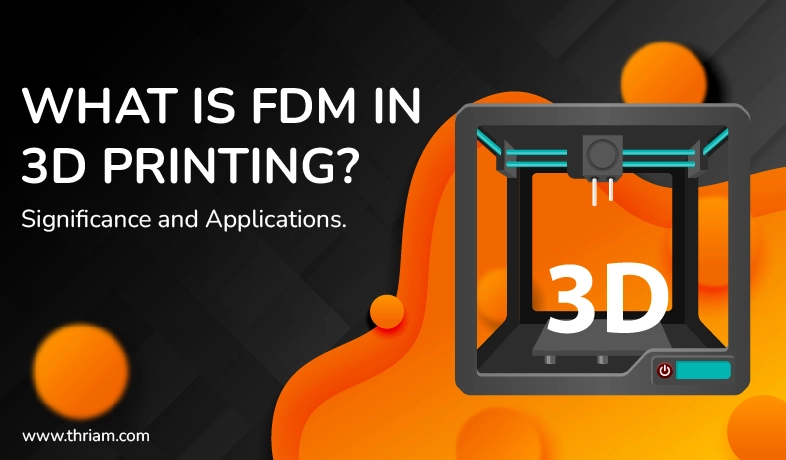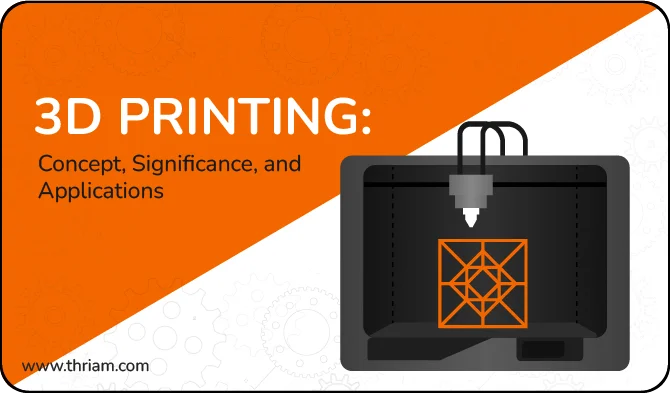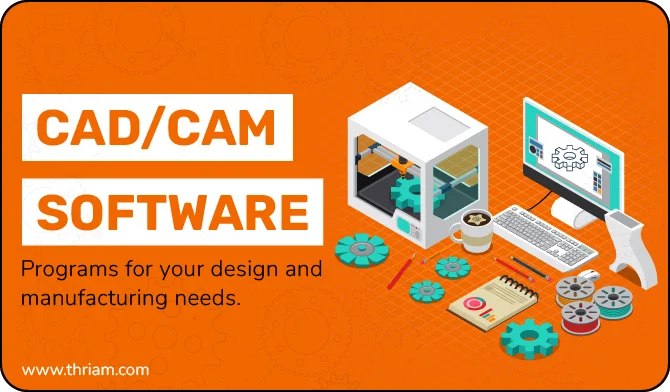What Is SLS 3D Printing 2024
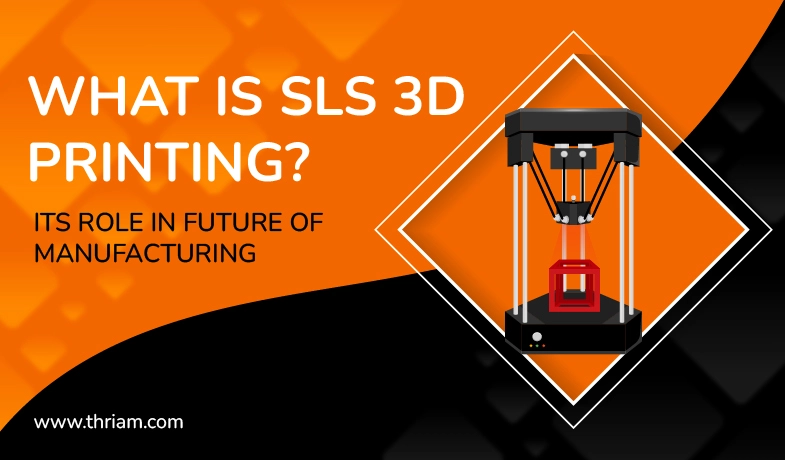
In recent years, SLS 3D printing has gained significant popularity across various industries. It has revolutionized the way objects are created, enabling faster prototyping, customization, and cost-effective production. Among the various 3D printing technologies, selective laser sintering (SLS) stands out as a powerful and versatile technique. In this blog post, we will delve into the world of SLS 3D printing, from its fundamentals to its applications, advantages, and disadvantages.
What is SLS 3D printing and why is it important?
Selective laser sintering (SLS) is an additive manufacturing technique that utilizes a high-powered laser to fuse together powdered material, layer by layer, to create three-dimensional objects. Unlike other 3D printing methods that require support structures or a liquid medium, SLS printing does not necessitate additional supports during the fabrication process. This makes it ideal for designing complex geometries, intricate parts, and functional prototypes.
The significance of SLS printing lies in its capacity to produce highly accurate and durable objects with a wide range of materials, including plastics, metals, ceramics, and composites. This flexibility opens up new possibilities for product development, rapid manufacturing, and customization in industries such as aerospace, automotive, medical, and consumer goods.
Equipment and materials required for SLS 3D printing
To embark on the journey of SLS printing, several key components and materials are essential. Let's take a closer look at what you'll need:
- SLS Printer: An SLS printer consists of a build chamber, a laser system, and a powder dispensing system. The build chamber provides a controlled environment for the printing process, while the laser system is responsible for selectively melting the powdered material. The powder dispensing system ensures an even distribution of powder layers.
- Powdered Material: SLS printing requires powdered materials that can be selectively sintered by the laser. The most commonly used material is nylon powder, which offers excellent mechanical strength, heat resistance, and durability. Other materials, such as metals, ceramics, and composites, can also be used for specific applications.
- Powder Handling Equipment: As SLS printing involves working with powdered materials, proper handling equipment is crucial to efficiently manage and recycle the powder. This includes sieving machines, powder storage containers, and powder recycling systems.
- Computer-Aided Design (CAD) Software: CAD software is essential for designing 3D models that can be translated into printable files. It allows the creation of intricate designs, necessary for taking full advantage of the SLS printing technology.
Now let's dive into the step-by-step process of SLS 3D printing:
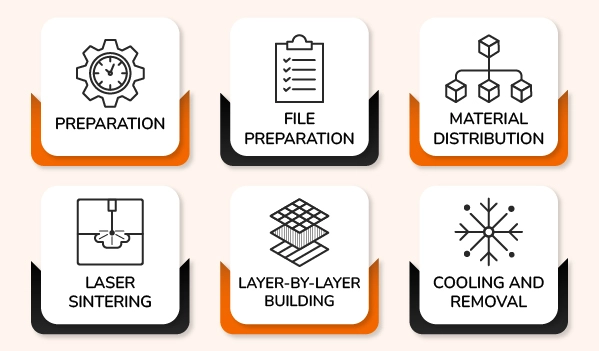
- Preparation: Begin by creating a 3D model of the object you wish to print using CAD software. Ensure that the design is suitable for SLS printing, taking into consideration material constraints and build requirements.
- File Preparation: Once the model is complete, it needs to be saved in a format that the SLS printer can understand. The most widely used file type is the Standard Tessellation Language (STL).
- Material Distribution: Load the powdered material into the printer's powder dispensing system. The printer spreads a thin layer of powder onto the build platform, ready for the next step.
- Laser Sintering: The laser system scans the first layer of the powdered material, selectively sintering the particles together according to the 3D model's shape. The sintered layer adheres to the previous layer, firmly bonding the structure.
- Layer-by-Layer Building: After sintering the first layer, the process is repeated for subsequent layers. The build plate gradually moves downwards, allowing the powdered material to be distributed and sintered layer by layer until the full object is complete.
- Cooling and Removal: Once the printing process is finished, the object needs to cool down inside the printer before removal. Excess, unsintered powder can be easily cleaned off using a brush or vacuum. The final printed object is now ready for use or additional post-processing.
Applications of SLS 3D printing
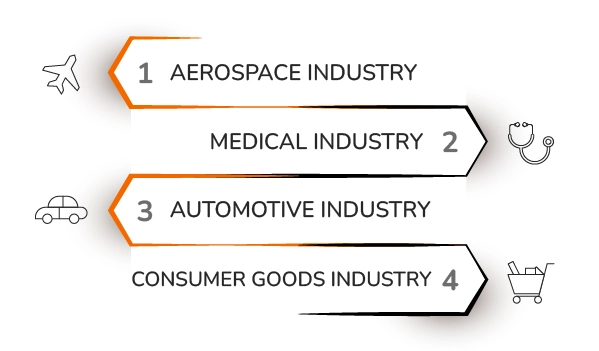
SLS printing finds extensive applications in a wide range of industries, harnessing its unique capabilities for various purposes, including:
- Aerospace: SLS printing enables the production of lightweight and intricate components, reducing overall aircraft weight, improving fuel efficiency, and ultimately enhancing performance and safety.
- Medical: The medical industry benefits from SLS printing by manufacturing patient-specific implants, surgical guides, prosthetics, and anatomical models with high accuracy and biocompatible materials.
- Automotive: SLS-printed prototypes, functional parts, and tools find applications in the automotive industry, speeding up the product development process and reducing costs.
- Consumer Goods: SLS printing enables the production of custom-designed and personalized consumer goods, such as jewelry, fashion accessories, and household items.
Advantages and disadvantages of SLS 3D printing
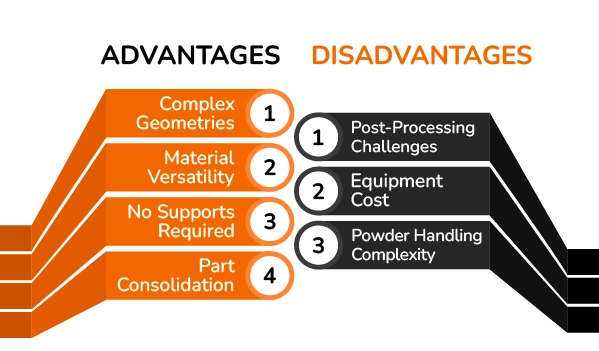
SLS printing offers several advantages over other 3D printing methods, including:
- Complex Geometries: SLS printing can fabricate highly complex geometries with intricate details and internal features that would be difficult or impossible to achieve using traditional manufacturing methods.
- Material Versatility: With a wide range of available materials, including plastics, metals, ceramics, and composites, SLS printing offers versatility for various applications and functional requirements.
- No Supports Required: Unlike other 3D printing methods, SLS printing does not require additional supports, thereby reducing material waste and simplifying post-processing.
- Part Consolidation: SLS printing allows for the creation of complex assemblies as a single, unified piece, eliminating the need for costly and time-consuming assembly processes.
However, 3D SLS printing does have some limitations and disadvantages:
- Post-Processing Challenges: SLS printed parts may require additional post-processing steps, such as sanding, polishing, or dyeing, to achieve desired aesthetics and surface finish.
- Equipment Cost: SLS printers and the associated equipment can be expensive, making it less accessible for individuals or small businesses compared to other 3D printing technologies.
- Powder Handling Complexity: SLS printing involves working with powdered materials, which requires proper handling, storage, and disposal procedures to ensure safety and efficiency.
Notable companies and individuals using SLS 3D printing
Several notable companies and individuals have harnessed the power of SLS printing to bring innovation and revolutionize their respective fields. Here are a few examples:
- NASA: The National Aeronautics and Space Administration (NASA) has extensively used SLS printing for prototyping and tooling in their spacecraft development processes.
- Prodrive: Prodrive, a motorsport engineering company, has utilized SLS printing to manufacture lightweight, high-performance parts for racing cars, such as aerodynamic components and engine parts.
- João Neves: João Neves, a Portuguese designer, leveraged SLS printing to create the stunning "Voronoi Lamp," showcasing the intricate lattice structures achievable with this technology.
Embrace the future of manufacturing with SLS 3D printing
In conclusion, SLS printing opens up a world of possibilities in manufacturing, design, and rapid prototyping. Its ability to produce highly detailed and functional objects with a wide range of materials makes it a powerful tool for various industries. By understanding the equipment, materials, process, as well as the advantages and disadvantages of SLS printing, you can unlock the potential of this technology and embark on your own journey of creativity and innovation.
So, why not take the leap and explore the realm of 3D printing?
Key Facts about SLS 3D Printing
- SLS printing does not require support structures during the printing process, making it ideal for complex designs.
- SLS printing can use a variety of materials, including plastics, metals, ceramics, and composites, providing versatility for different applications.
- SLS printed objects have excellent mechanical strength, heat resistance, and durability, making them suitable for functional prototypes and end-use parts.
